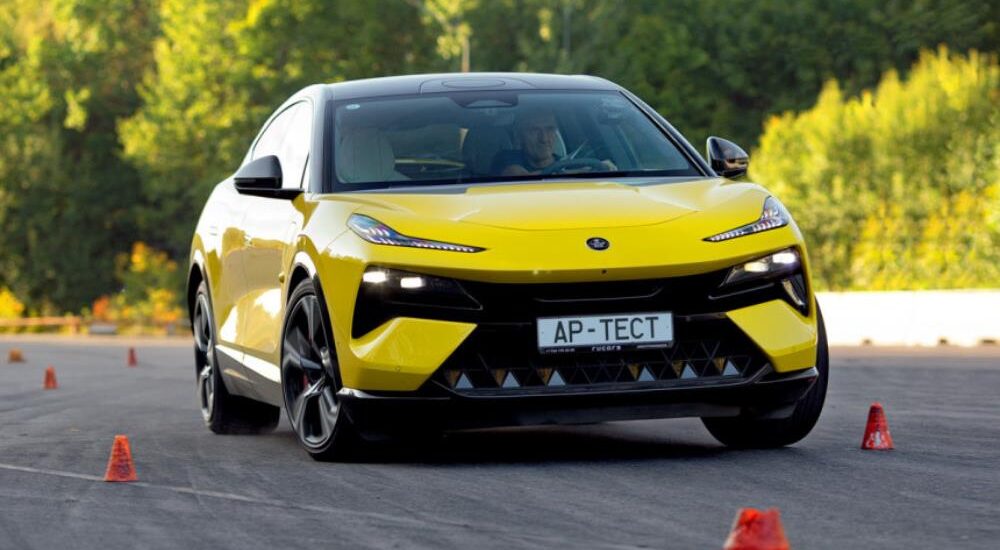The Lotus Eletre marks a significant milestone in the esteemed history of the renowned British brand — it’s their inaugural electric crossover and the first model manufactured in China. We recently had the privilege of putting this electric marvel through its paces on the high-speed roads of a test track, an experience that wasn’t without its challenges, especially when it came to recharging the battery after performance tests.

Lotus Engineering was founded in 1952, but as early as 1948, Colin Chapman built his first racing car in a garage, as reminded by this plaque on the central pillar of the Eletre.
Founded in 1952 by engineers Colin Chapman and Colin Deyre, Lotus Engineering initially focused on crafting racing cars while dabbling in road car production. The company’s Formula 1 dominance between 1963 and 1978, clinching seven Constructors’ Championships and six individual titles, solidified its place in motorsport history. However, financial woes plagued Lotus in the early 1980s, leading to external interventions.


The 2006 Lotus APX (Aluminium Performance Crossover) concept featured an aluminum body, a supercharged 3.0 V6 engine (300 hp), and permanent all-wheel drive. Looking at the design of the car, one wouldn’t regret that the project was canceled.
Under American conglomerate General Motors’ ownership in 1986 and later acquisition by Malaysian firm Proton in 1996, Lotus struggled to regain its footing. The turning point arrived in 2017 when Chinese giant Geely acquired a controlling stake, injecting much-needed capital and kickstarting Lotus’ electric future.

The six hexagons at the bottom of the bumper feature active flaps that open to allow air to the cooling system’s radiators for the electric motors and battery.
The dream of a powerful, high-performance crossover had long simmered within Lotus, inspired by models like the Porsche Cayenne. Although the concept of an aluminum-bodied, supercharged V6-powered Lotus APX emerged in 2006, resource constraints hindered progress. The vision came to fruition with the Lotus Eletre, developed with insights from Volvo and Polestar, fellow Geely subsidiaries.

The spoiler extends depending on the driving mode. At high-speed braking, the angle of ascent reaches 34 degrees.
While Lotus continues to cater to petrolheads with models like the Lotus Emira, its last gasoline offering, the future is electric. Originally, the limited-edition hypercar Lotus Evija was slated to be the brand’s first electric vehicle, boasting over 2000 hp. However, delays have stalled its delivery, making way for the more accessible Lotus Eletre, already in production and rapidly gaining traction globally.

The rear window does not have a wiper; the air flow, shaped by the side flaps, is supposed to blow the water off.
In the first half of 2023, the Eletre outsold its petrol counterpart, the Emira, by a staggering margin, underscoring the growing demand for electric mobility. With its recent debut in Europe and impending launch in the United States, sales projections are soaring. A new manufacturing facility in Wuhan, China, underscores Geely’s commitment, with a capacity of 150,000 vehicles annually — a milestone for Lotus.

For enthusiasts considering a shift from the roaring Lamborghini Urus to the silent yet equally impressive Lotus Eletre, the dimensions speak volumes. Nearly identical in size, both boast striking design elements, with aerodynamic efficiency seamlessly integrated into every curve. With a drag coefficient of just 0.26, the Eletre embodies the perfect blend of style and performance.

The interior, finished in Nappa leather and Alcantara, looks luxurious. The doors have soft-close mechanisms and frameless double glazing.
The Lotus Eletre isn’t just another electric crossover; it’s a testament to the brand’s commitment to performance and innovation. Recently, we had the exhilarating experience of putting this electric marvel through its paces on the Dmitrovsky test track, and it didn’t disappoint. But before we delve into the adrenaline-fueled ride, let’s talk about what sets the Eletre apart.

It’s challenging to see anything other than speed on the narrow strip of the display. Though in Off-Road mode, it even squeezes in data on the angles of longitudinal and lateral tilts.
Built on the EPA platform (Electric Premium Architecture), a sporty iteration of Geely’s SEA (Sustainable Experience Architecture), the Eletre shares its technical DNA with Zeekr and Polestar electric cars. However, what sets it apart is the meticulous chassis refinement honed by Lotus’ expertise. With over a million miles covered during testing across continents and numerous laps around the Nürburgring, the Eletre isn’t just a crossover; it’s an electric racing car meant to be driven hard.

At the base of the console is an induction charging pad and a minimalistic climate control unit, which includes a touch-sensitive button to open the glove compartment.
Traditionally, Lotus cars are known for their lightweight design, a principle championed by founder Colin Chapman. However, with the transition to electric power, the Eletre carries more heft, tipping the scales at 2624 kg for the S+ model. But despite its weight, the Eletre boasts near-perfect half-axle weight distribution, enhancing its handling dynamics.

From Lotus seats, one would expect better lateral support. However, they do have ventilation and massage functions.
Now, let’s talk performance. Engage the “Sport” mode, and the Eletre springs to life, propelled by two electric motors generating a combined output of 612 hp. The acceleration is brisk, with a 0-100 km/h sprint in just 4.9 seconds, showcasing the electric crossover’s sporty credentials. The suspension setup in sport mode accentuates its athletic prowess, albeit at the cost of some ride comfort on uneven surfaces.

The seats are adorned with carbon fiber inserts, and the safety belts can be ordered in one of six colors.
Braking performance is equally impressive, with minimal nose dive and no signs of overheating even after aggressive braking maneuvers. The standard brakes offer ample stopping power, but enthusiasts can opt for carbon-ceramic discs for a more track-focused experience.

The metallic tweeter of the high-frequency speaker, combined with a mid-range speaker, is a hallmark of the English company KEF. The base model includes 15 speakers (1380 Watts), but for an additional fee of 562,500 rubles, a more powerful sound system with 23 speakers (2160 Watts) is available.
On the twisty mountain roads of the test track, the Eletre shines, responding eagerly to steering inputs with minimal body roll. Optional features like active anti-roll bars and rear-wheel steering enhance agility, reminiscent of German premium crossovers.

The transparency of the electrochromic roof gradually changes via the menu, without a traditional curtain.
Despite its sporting pedigree, the Eletre maintains composure on dry asphalt, resisting easy skidding. However, it does eventually lose traction, necessitating active steering correction. It remains to be seen how it performs on snowy roads, but with its wide 22-inch Pirelli P Zero tires, equipped with Seal Inside technology, small punctures are a non-issue.

Thanks to active stabilizers, the Eletre almost rolls without tilting during maneuvers. However, by the third lap, some artificial, “parasitic” efforts appeared on the steering wheel. To avoid breaking the power steering, we stopped the measurements. We did manage to record the braking distance from 80 km/h when swerving around an obstacle: an average of 33.4 meters.
Our journey with the Lotus Eletre wasn’t without its challenges, but it provided invaluable insights into the capabilities and comforts of this electric crossover.
Despite conducting dynamic measurements with a punctured tire and only 30% battery charge, the Eletre demonstrated impressive performance. Even at this charge level, it effortlessly reached its claimed maximum speed and accelerated to 100 km/h in just 0.4 seconds slower than the passport time of 4.5 seconds.
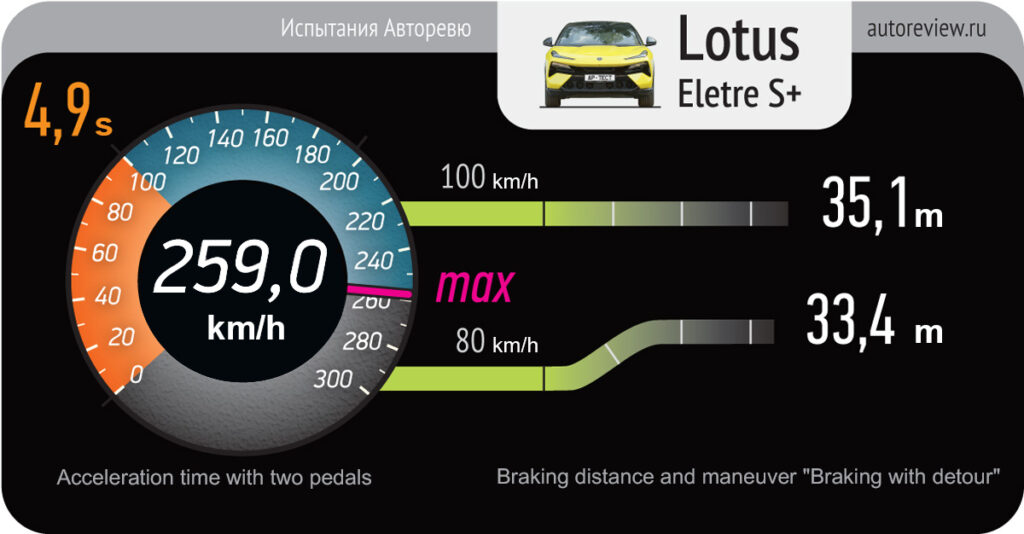
With the battery level dropping to 9%, we faced a dilemma. Unable to charge at the initial station, we relied on a Lukoil gas station equipped with a Rosseti terminal. Thankfully, the charging process commenced smoothly, delivering nearly 100 kW of power. In just 56 minutes, the Eletre absorbed 75 kWh, providing a range of 358 km on a 71% charge.
| Parameters | Electric Vehicle Lotus Eletre S+ |
|---|---|
| Maximum Speed, km/h | 259 |
| Acceleration Time, s 0—50 km/h 0—100 km/h 0—150 km/h 0—200 km/h 0—250 km/h 400 m Sprint Time 1000 m Sprint Time 60—100 km/h (D) 80—120 km/h (D) | 2.4 4.9/5.0* 8.5 15.7 35.2 12.9 23.2 2 2.2 |
| Braking Distance | |
| from 100 km/h Distance, m Deceleration, m/s² | 35.1 11 |
| from 150 km/h Distance, m Deceleration, m/s² | 82.8 10.5 |
| from 200 km/h Distance, m Deceleration, m/s² | 146.9 10.5 |
* Acceleration with two pedals / foot transfer
Switching to the “Tour” mode, the Eletre offered a more relaxed driving experience, with softer acceleration and improved suspension comfort. Despite the jolts from the heavy 22-inch wheels on bumpy roads, the cabin remained tranquil, aided by active noise cancellation and a premium KEF audio system.

Under the right flap is a socket for alternating current charging. When connected to the public three-phase charging system “Energia Moskvy,” the actual power reached 12 kW.
Inside, the Eletre exudes luxury and sophistication, with meticulously crafted details like metal paddle shifters, adjustable seats with heating, ventilation, and massage functions, and an electrochromic panoramic roof. While the absence of traditional instruments may feel unusual at first, the expansive 29-inch projection screen provides all essential information, including autopilot functions.


Lotus’s 800-volt electrical system allows charging at terminals with up to 350 kW power. In Russia, such terminals are simply non-existent; the maximum delivered by Rosseti charging stations was 100 kW, which is also quite good.
Speaking of autonomy, the Eletre boasts advanced lidar sensors hidden within its design, offering enhanced spatial awareness up to 200 meters around the vehicle. The rear spoiler dynamically adjusts its angle to optimize aerodynamics and stability, while metal buttons on the steering wheel and optional multimedia mirrors add to the overall experience.
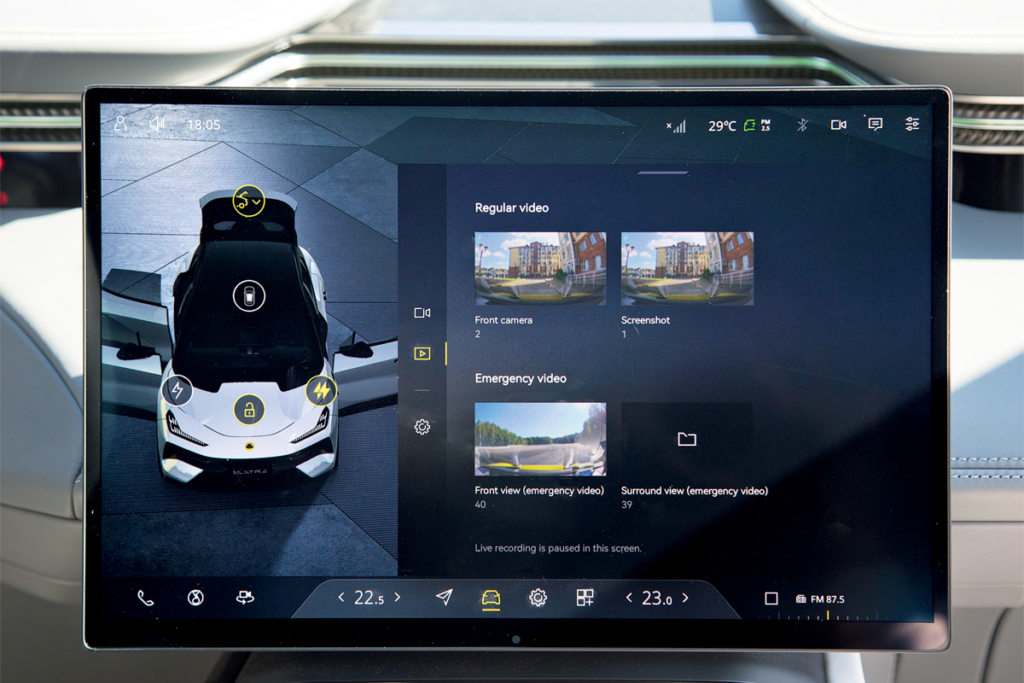
The built-in dashcam automatically records clips in an emergency. All our braking and maneuvering at the test site ended up in the onboard video library.
Despite minor quirks like the horizontal display positioning and stiff buttons, the Lotus Eletre impresses with its blend of performance, comfort, and cutting-edge technology. Whether conquering the track or embarking on a weekend getaway, the Eletre delivers an electrifying driving experience synonymous with the Lotus legacy.
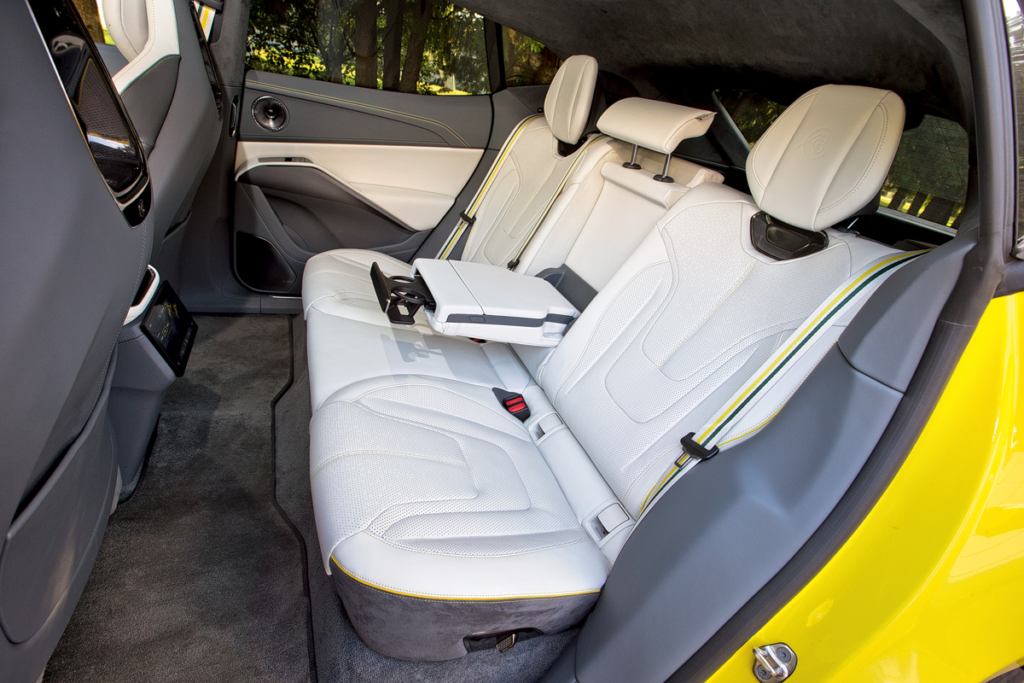
The second row is spacious, with electrically adjustable seat backs.
Don’t forget the thrill of customizing your dream car in the configurator! Visit Rucars’ website, the provider of our test Lotus, and tailor the Eletre to your preferences: from interior hues to carbon fiber accents, the options are yours to explore. Just like the days of configuring a Porsche or BMW. Patience may be required, though, as your customized Eletre will take five to six months to arrive.
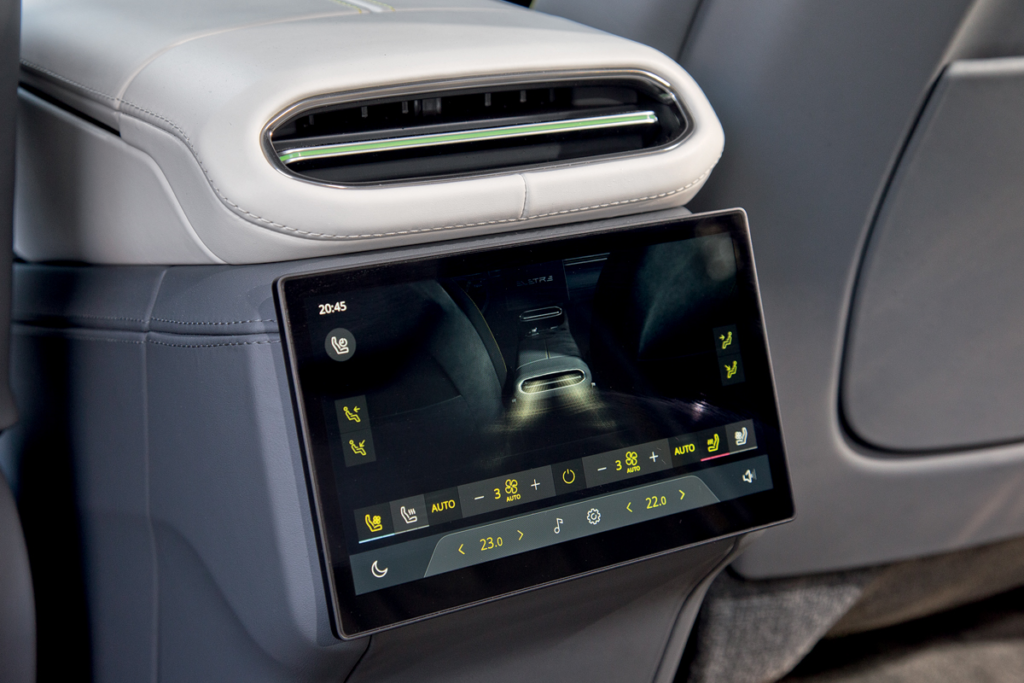
Rear passengers have their own tablet for controlling climate, seat heaters, and music.
But the choices don’t end there. Opt for the base Lotus Eletre S+, starting from 15.4 million rubles, or elevate your experience with the top-tier Eletre R+, boasting 918 horsepower starting from 18.9 million rubles. The performance disparities between the models may not rival a Tesla, but the Eletre’s Off-Road mode, raising ground clearance to 255 mm, offers adventures where conventional SUVs falter.
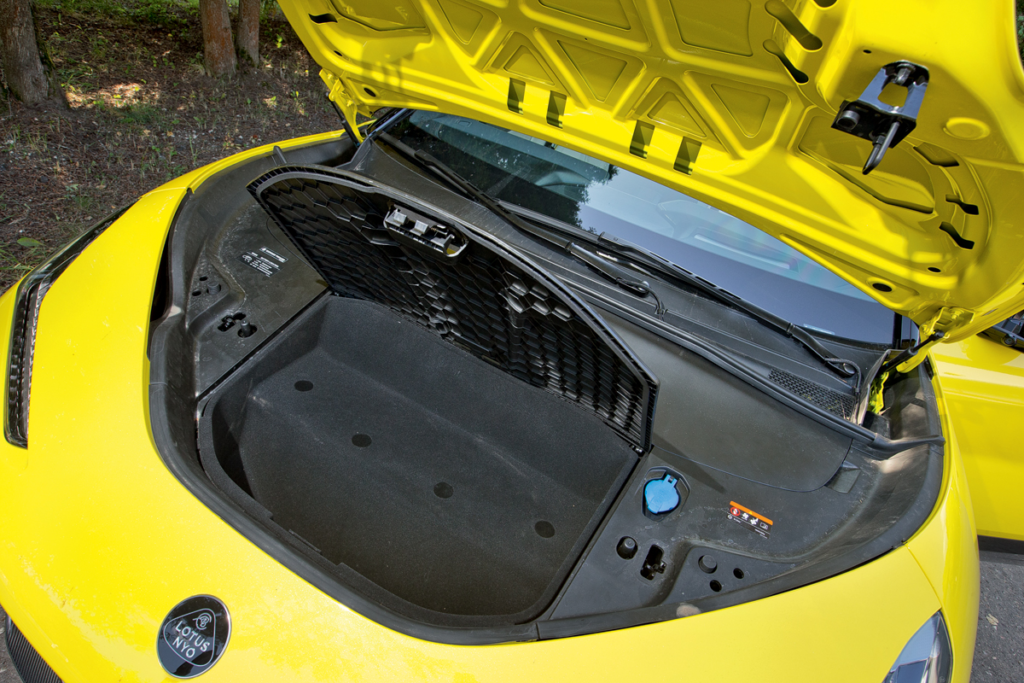
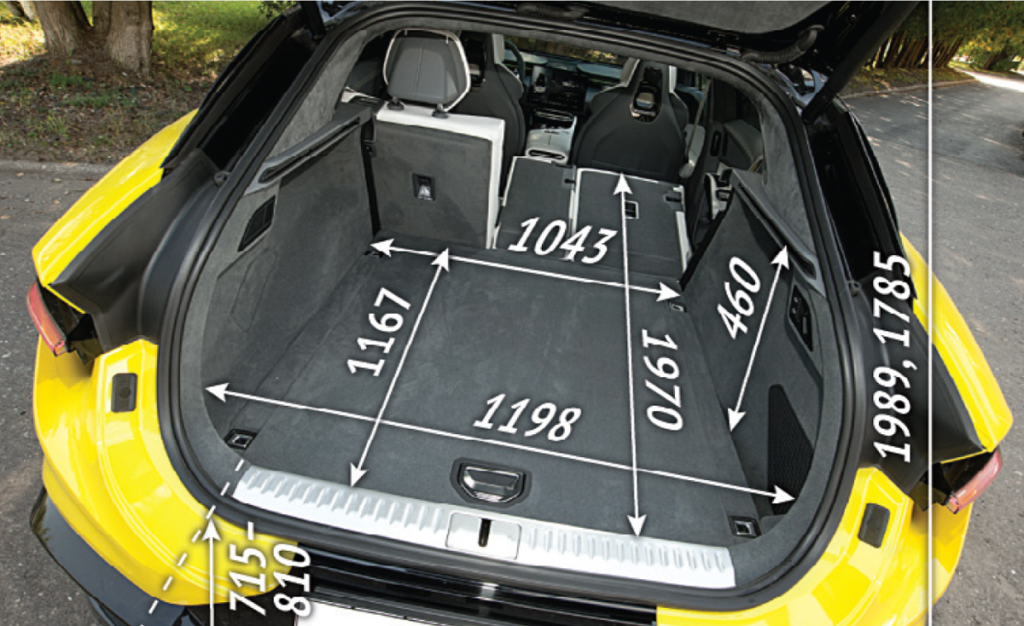
The rear bench seat backs fold in a 40:20:40 ratio, with buttons for controlling the air suspension located on the right—loading height can be reduced from the standard 810 mm to 715 mm.
Dimensions, weight and weight distribution along the axes

Manufacturers’ data are highlighted in blue/Autoreview measurements are highlighted in black. Dimensions are in millimeters.
*Actual vehicle weight without driver, with full fuel tank and full process fluids
**For right rear seat
**Interior width at shoulder level in the first/second row of seats.
While Lotus has no plans for an official Russian market release, the allure of the Eletre persists. Warranty concerns loom, with European buyers enjoying up to five years or 150,000 kilometers of coverage. In Russia, however, a dealer’s one-year warranty, available for an additional fee, is the maximum assurance. Yet, for enthusiasts seeking a powerful Chinese electric vehicle intertwined with European engineering and British heritage, the Eletre remains an enticing proposition.


Photo: Dmitry Pitersky
Expert group: Andrey Mokhov
This is a translation. You can read an original article here: Кроссовер Lotus Eletre на полигоне: мчит даже на последних киловаттах!

Published May 09, 2024 • 23m to read

